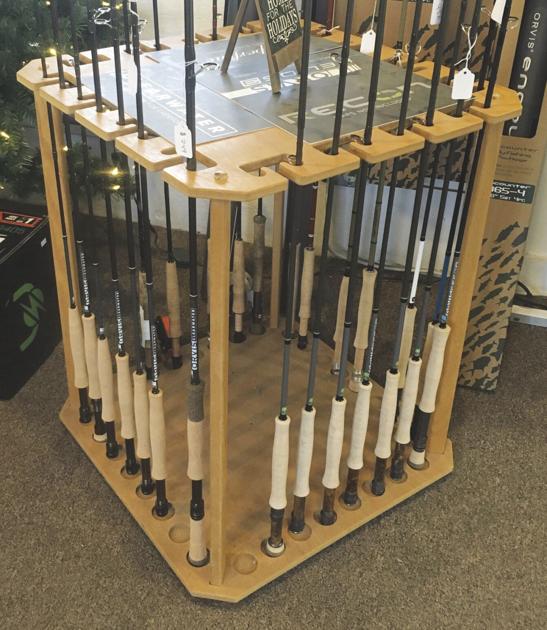There are so many rod choices these days that it boggles the mind. Fast action, medium fast, medium, slow. Mid flex, tip flex. Six foot. Ten foot. One weight. Eight weight. It’s enough to make someone cry.
On top of all the actions, you need to find a line that will optimize your rod’s power and your casting stroke. It takes a little bit of time to find the combination to match your style, the waters that you wish to fish, and the type of flies you want to fish.
Far and away the No. 1 choice for all around trout fishing in New Hampshire and the Mount Washington Valley is the 9 foot, 5 weight, four-piece rod.
Every major rod manufacturer makes one. Each has its own features and benefits. You need to test cast a rod before you buy it. Most fly shops will let you test cast the rods that they carry.
It can’t be emphasized enough. Test cast a rod before you buy a rod. Every individual has their own casting stroke. There is nothing worse than buying an expensive fly rod, casting the rod and hating the way the rod casts your fly.
The fly shop will also know what lines cast best with which rods. This will save you time and frustration. Let the professionals help you make the choice.
Should you get an outfit that just doesn’t cast the way you expect, go to the fly shop. They will be able to tell almost immediately how to help you get the most out of the rod and make any adjustments.
During your lifetime of fly fishing, you will own many rods. Some own more than others. There is a rule of thumb when you get ready to buy a second rod. The 3-5-7 or the 2-4-6 rule.
If you started out with the 9 foot 5 weight rod your next choice for small streams and small flies should be the 3 weight rod. Most popular three weight rods are 7½ feet. These rods are great for small streams and beaver ponds where trout are small and casting room is tight.
The third rod you will get is a 7 weight rod. Popular lengths are 9 foot or 10 foot. This rod will handle large flies and windy conditions on large rivers and lakes.
If you are an experienced fly fisher, you may choose to go two weight rod, 4 weight rod, and 6 weight rod. Lighter weight rods can be more of an advantage with finicky trout but are more of a challenge for casting. There are also anglers who just have one of each weight, 2 through 7. If fly fishing is your passion, why not?
I am a 2-4-6 kind of guy. I like full flex, medium fast fly rods. They fit my casting stroke and perform well on the brook trout, my favorite trout to pursue.
The 6 weight rod is a Orvis Recon 9 foot, four piece. This rod is great for early spring fishing on the Saco and the Androscoggin rivers. It throws big streamers and plays fish well. I use this rod for the Hexagenia hatch as well. These are big dry flies taken by big brook trout.
The 4 weight is a Scott Radian. This rod is a 9 foot, four piece as well. This is a rod on the faster side, but I have slowed the action by using a heavier weight forward line. I have lost count how many brook trout I have landed with this combination.
The 2 weight rod slot is currently empty. There are some alternatives being considered. Maybe Santa will know the right rod for me and leave one under the tree.
When purchasing a new fly rod, be sure to purchase a new line as well. This will optimize the performance of your new rod.
Steve Angers, a native to the Conway area, is the author of the book “Fly Fishing New Hampshire’s Secret Waters” and operates the North Country Angler.
Credit: Source link































